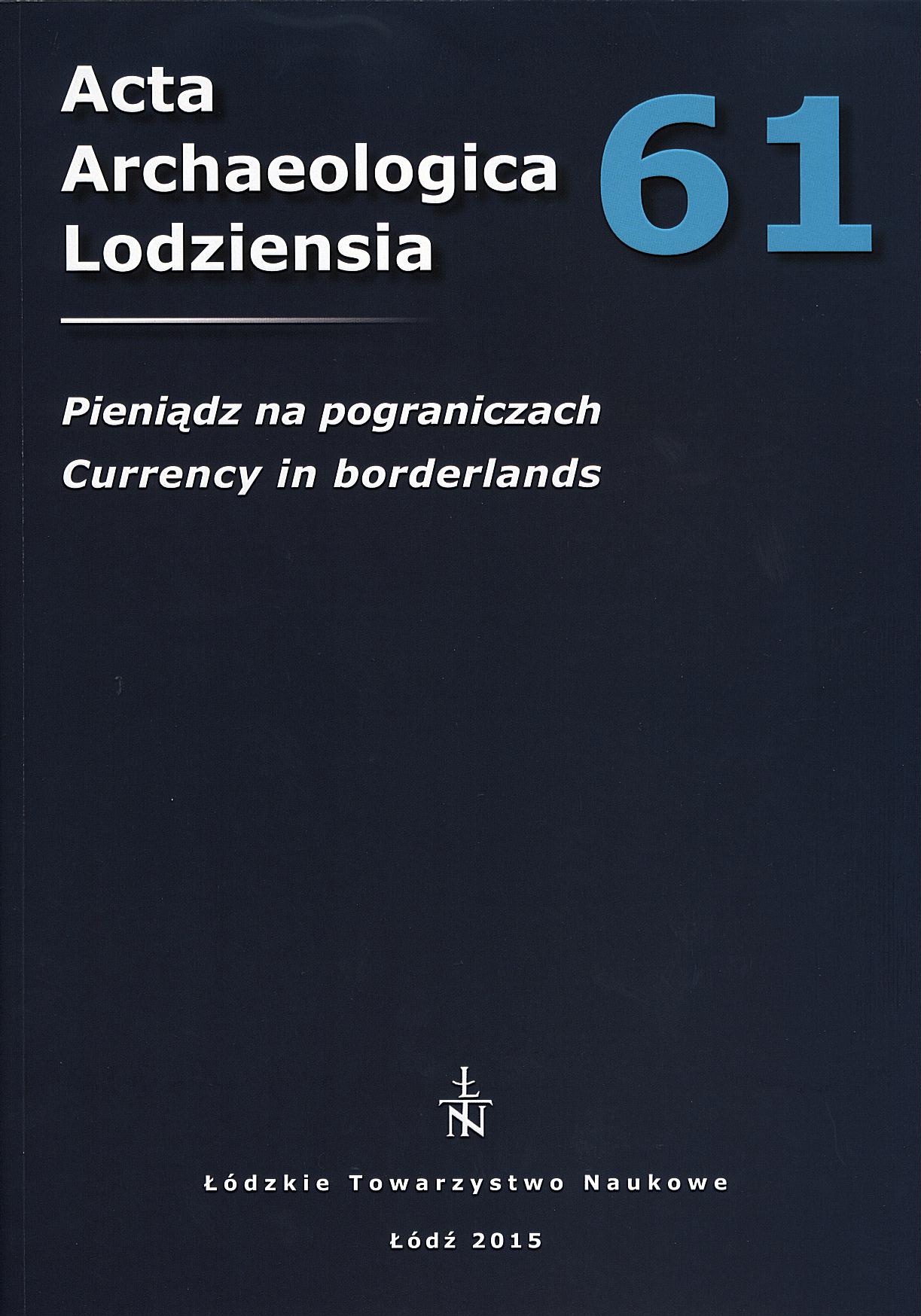Numizmatyka na pograniczu różnych specjalności. Żetony czy tokeny? Uwagi o nazewnictwie nowożytnych numizmatów
Numismatics on the border of different sciences. “Jetons” or tokens? Some remarks on modern numismatic terminology
Author(s): Tomasz MaćkowskiSubject(s): History, Archaeology, Cultural history, Ethnohistory
Published by: Łódzkie Towarzystwo Naukowe
Keywords: numismatic terms; token; Gdańsk; terminologia numizmatyczna; żeton
Summary/Abstract: The article discusses the usage of the word “żeton” in Polish numismatic terminology. Over the last two decades archaeological excavations in Gdańsk have uncovered a very large number of small pieces of sheet lead stamped with the coat of arms of the city of Gdańsk, personal marks, or various emblems. Some of the municipal tokens dating to the 16th and 17th centuries found in Gdańsk are inscribed with the German word “Zeichen” or “Teken”. Both terms can be translated as “token”, but in contemporary Polish numismatic terminology they are termed “żetony”. The author examines the very meaning of the latter term in Polish, pointing out that originally during the Middle Ages there was a significant difference between “żetony” and “Zeichen” or “Teken” (tokens). It was not until the end of World War II that the Polish research community adopted the practice of mixing both terms in a way that actually compromised their historical meaning. Thus the author suggests that it is highly desirable to reconsider the usage of both terms in order to develop a more precise definition of the artifacts in question and to avoid unnecessary misunderstanding. Celem niniejszego artykułu jest prześledzenie znaczenia pojęcia „żeton” na gruncie języka polskiego i zasygnalizowanie zbyt szerokiego zakresu stosowania tego terminu w numizmatyce polskiej. W europejskiej terminologii numizmatycznej „jeton/jetton” oznacza najczęściej to samo co w języku polskim „liczman/ podskarbiówka”. Natomiast polscy badacze nazywają współcześnie „żetonami” m.in. wykonane w XIV-XVIII w. ołowiane zabytki sygnowane różnorodnymi znakami, które najczęściej były wykorzystywane do rozliczania pracy, powinności, uprawnień bądź określonych dóbr materialnych. Jest to bardziej wynikiem stosowanej w środowisku badaczy po II wojnie światowej konwencji, niż wyrazem historycznego rozwoju pojęcia. Ponadto, w czasach coraz bardziej wdzierającego się do naszej rzeczywistości języka angielskiego fakt, iż „jeton” „żetonem” wcale nie jest – może prowadzić do szeregu nieporozumień w opisie dawnych artefaktów.
Journal: Acta Archaeologica Lodziensia
- Issue Year: 2015
- Issue No: 61
- Page Range: 111-117
- Page Count: 7
- Language: Polish

